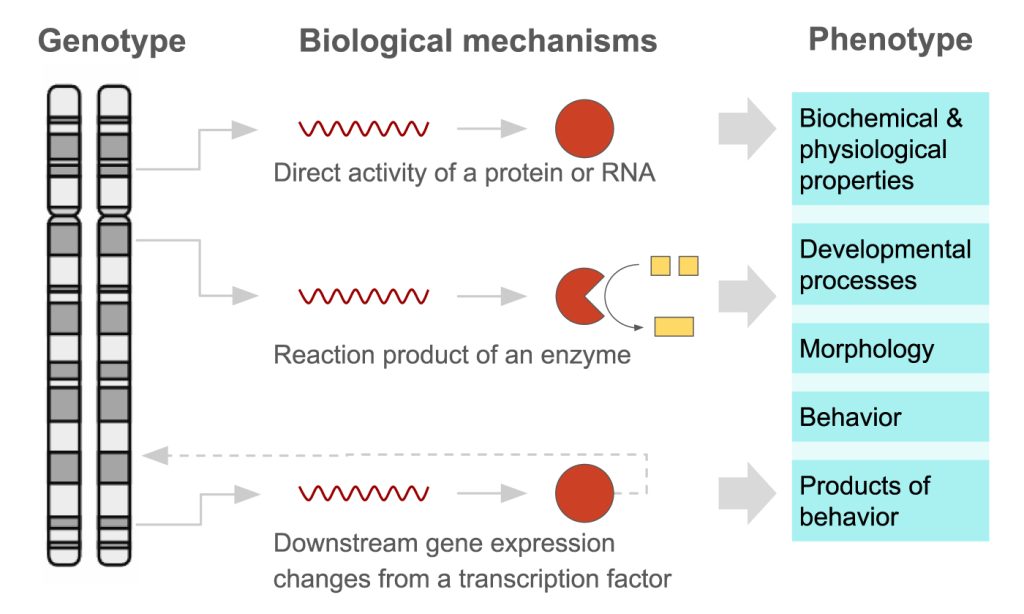4.2 Genotype vs phenotype
The genotype of an organism is the genes it has. You can’t see them, and they are inherited from the parents of the organism (if sexual reproduction occurs). The phenotype is what results when the genes are expressed; for example, you have the genes (genotype) for attached earlobes, and the phenotype is you physically having attached earlobes. Some phenotypes can be seen with the naked eye, like hair and eye colour, while others are obscured, like blood type. Phenotypes are determined by genotype but can also be influenced by the environment (this is called epigenetics). For example, you might have inherited a predisposition for high cholesterol from your parents, but your diet can affect your cholesterol levels as well.


